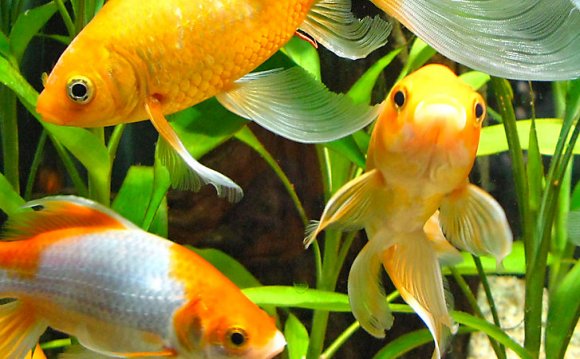
- Diet: Flake, Frozen, Freeze-dried
- Maximum size: 2.5"
- Water temperature: 72-82° F
- Swimming level: All
- Experience level: Intermediate
- Tank Setup: 1+ quart, solitary pet
With their long flowing tails and vibrant colors, its no wonder that bettas are one of the most popular fish for beginner aquarists. They are easy to care for and make a great ornamental addition to any desk, kid's room or living space. While female bettas are not aggressive and can live together peacefully, male bettas are aggressive toward each other. Therefore, house only one male with smaller, peaceful fish in a community aquarium, or keep him alone in a one-quart or larger bowl.
Bettas gulp air from the water's surface to help them breathe. You will see your betta slowly swimming toward the top of your aquarium or bowl. They also tend to rest near the bottom. As carnivores, bettas eat mostly animal matter, including prepared foods and fresh, freeze dried or frozen foods. Choose a tropical flake or pellet food. Feed according to the directions on the packaging.
Learn about the Betta
Common Name
Betta
Other Common Names
Siamese Fighting Fish
Scientific Name
Betta splendens
Community
Gourami
Compatibility
More than one female can be kept in a peaceful community setting. Avoid fin-nipping fishes, such as some of the characins and barbs. Males, however, should either be housed in 1-gallon or larger containers as single specimens, or as the only male of its species in a peaceful community tank.
Habitat
Thailand-Cambodia: Moderately decorate with live plants, rocks and driftwood.
Breeding
The male has the long flowing fins and the female has very short round fins. The male will create a bubble nest at the top of the aquarium, and the eggs will develop in there until they hatch in about 24 hours.
Additional Comments
Their bright colors are from breeding in captivity. They also have the ability to breathe air from the surface through their labyrinth, which acts like lungs.









